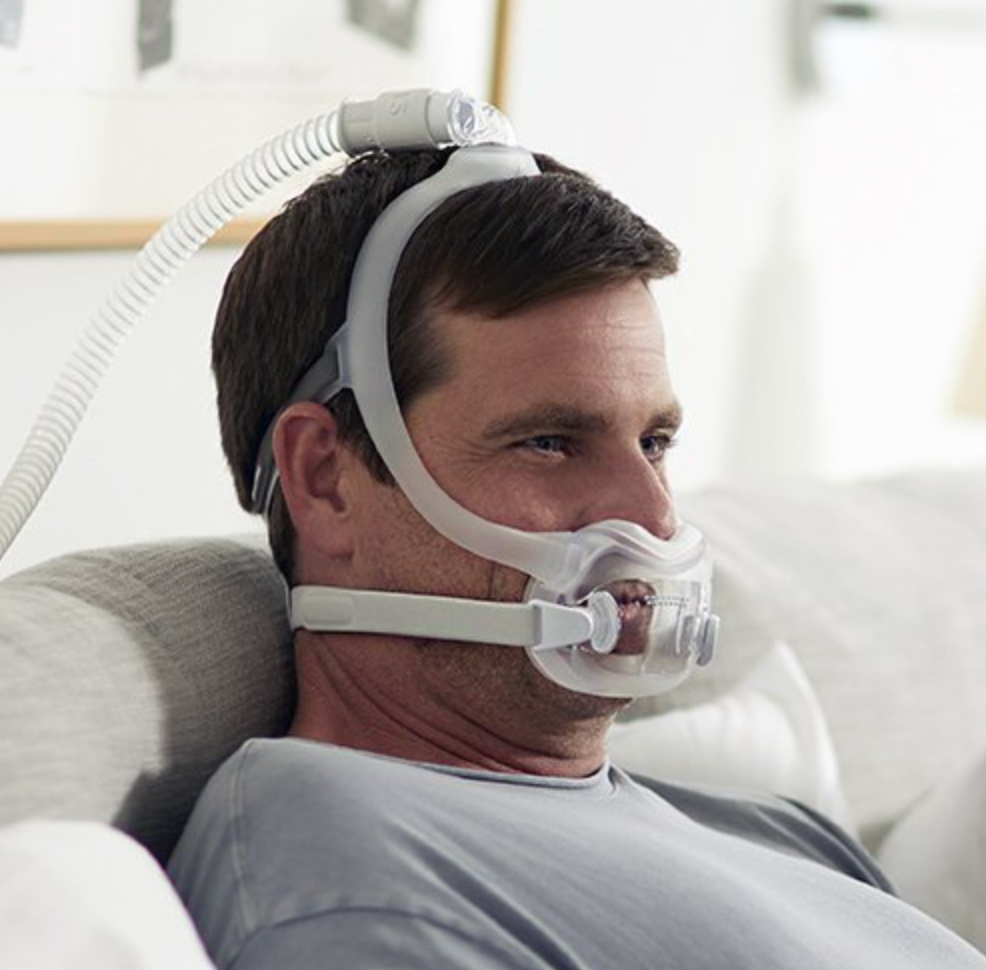How Full Face CPAP Masks are Gaining Popularity
Even though the nasal CPAP mask style is the most popular, full face CPAP masks are gaining in popularity due to their versatility and improved design.
Currently, the most popular CPAP mask is a nasal mask, simply one that fits over just a person’s nose. Being the first masks available to CPAP users, people have become used to these traditional masks. However, there certainly is no problem wearing a nasal mask. They perform well, are generally comfortable, and come in many different shapes and sizes. With so many different nasal masks available, there is no wonder why they are still the most used mask available. Notwithstanding their popularity, a nasal mask might not be the perfect option for some every single night on CPAP therapy.
Full face masks are gaining traction in the last five years due to a higher need by CPAP users. They are more innovative and lightweight and as viable alternative to nasal masks. Many users now prefer full face to nasal masks as they have become more “user friendly” and comfortable. There are multiple reasons to use a full face mask. Below, I have highlighted a few of the more common motivations for choosing a full face mask to replace or alternate with other CPAP masks.
Why Choose a Full Face Mask
- Cold and Flu Season – During winter or even allergy season, many people have congestion throughout their nasal passages. When congestion happens, breathing from the mouth is a natural occurrence. Many users try nasal spray to help alleviate these symptoms. But nasal decongestants should only be used periodically. When congestion occurs, a full face CPAP mask is about the only solution available for extended use.
- Mouth Breathing during Sleep – CPAP therapy works to hold open the airways by pushing air into the CPAP mask. If you are using a nasal mask and your mouth is open during sleep, CPAP therapy becomes less beneficial. In essence, the air which is going in through the nasal passages is going directly out an open mouth. Obviously, this will dramatically impact the positive results a person receives from CPAP therapy. People with deviated septum’s also fall into this category.
- High Pressure – As pressure increases, the ability for the nasal passages to accept the airflow becomes more difficult. This air intensity can lead to dry nasal passages and even force a mouth to open. The ability of a full face mask to disperse high pressure more readily provides comfort to traditional nasal CPAP mask users on pressures above 15cm H₂O.
- Upper Lip/Teeth Pain – Unfortunately, many CPAP users tighten masks more than necessary. A CPAP mask should rest on the face and not be overly tightened. As a person tightens a mask due to cushion degradation or leakage, upper lip or teeth pain can occur. A full face mask fits below the lower lip, sitting directly on the chin. Even if you use a full face mask only a week out of the month, it will help alleviate the negative impact of constant nasal mask use.
- Change of Pace – It’s normal for people to have a few different masks to use for CPAP therapy. In fact, using different style masks helps to eliminate skin irritation and combat pressure point soreness. Because a full face mask rests on the face at different points than other masks, it can offer a different feel and fit and provide a good change of pace.
Each CPAP mask manufacturer such as Philips Respironics, ResMed and Fisher & Paykel offer a full line of full face masks which can meet the needs of the most discerning CPAP user. Although it can take a bit of time to get familiar with, a full face mask can mean the difference between effective and comfortable CPAP therapy and compliance.





